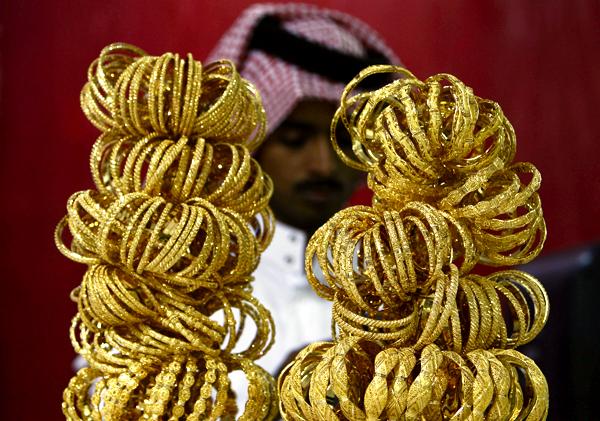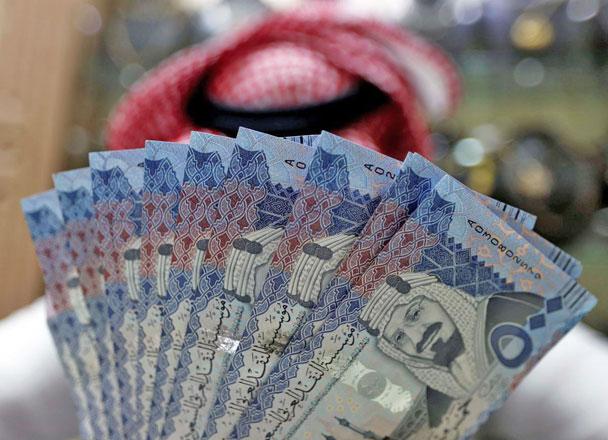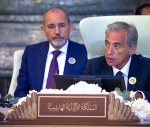You are here
Qatar central bank asks for FX data as capital outflows pressure riyal
By Reuters - Jun 08,2017 - Last updated at Jun 08,2017

Traders monitor screens displaying stock information at Qatar Stock Exchange in Doha, Qatar, on Monday (Reuters file photo)
DUBAI/DOHA — Qatar's central bank has asked commercial banks to provide it with detailed information on foreign exchange trading; banking sources told Reuters on Thursday as Doha's diplomatic rift with other Gulf countries put its currency under pressure.
The riyal hit an 11-year low of 3.6530 to the dollar late on Wednesday after Standard & Poor's (S&P) cut Qatar's credit rating, citing this week's decision by Saudi Arabia and the United Arab Emirates to sever diplomatic and transport ties with Doha.
The dispute, over Saudi and UAE charges that Doha supports terrorism, triggered outflows of capital from Qatar which, if they persist, could eventually make it harder for authorities to maintain the riyal's peg of 3.64 to the dollar.
The central bank's move to gather data on the currency market was in response to this concern, Qatari commercial bankers said.
"We now consider risks to external financing lines to the whole economy, including foreign direct investment, portfolio flows and to the financial sector, to be elevated, and this could lead to pressure on Qatar's pegged monetary arrangement," said S&P.
The sources said banks in Qatar were asked to provide daily information on their foreign exchange trading, a daily statement of withdrawals and transfers from deposits worth at least 10 million Saudi riyals ($2.7 million), and daily data on cash withdrawals and deposits.
Previously, banks were generally required to provide such information monthly.
The central bank also asked banks to supply on a weekly basis a breakdown of their customer deposits by maturity and type from Gulf Cooperation Council countries, Egypt and other countries, the sources said. The central bank did not respond to requests for comment.
The riyal rebounded to trade much closer to its peg in the spot market on Thursday; some traders said the central bank was supplying dollars to banks which wanted to close out their riyal positions, in order to avoid downward pressure on the currency.
"There's some stress in the Qatari riyal currency market but it's too early to talk about pressure on the Qatari peg," said a UAE treasury banker, who like most bankers declined to be named because of political sensitivities.
S&P estimated the government's liquid external assets were worth 170 per cent of gross domestic product, a massive amount equivalent to nearly 10 years of the country's imports — a much higher degree of backing for its currency than most countries.
Tension
Nevertheless, there were other signs of tension in Qatari financial markets on Thursday. The riyal remained under pressure in the offshore forwards market, which banks use to hedge against future moves in the currency.
The cost of buying insurance against a Qatari sovereign debt default hit a seven-month high, and the cost of borrowing three-month riyal funds in the interbank market jumped to 2.16 per cent, the highest in at least several years — a sign nervous banks were holding back funds.
A major source of capital outflows from Qatar so far has been the stock market, which plunged 9.7 per cent over three days before partially rebounding on Thursday. Some foreign portfolio managers sold stocks and sent the proceeds home. In addition, some banks in Saudi Arabia and the UAE are closing out Qatari riyal long positions and offloading part of their riyal assets to reduce their risk.
While Riyadh has told its banks it does not want them to do new business with Qatari institutions, neither Saudi Arabia nor the UAE has yet clarified whether banks will be required to liquidate existing deals. Some bankers are cutting exposure now to limit the pain if they are forced into a firesale of assets.
Other banks in Saudi Arabia and the UAE have halted all transactions in the Qatari riyal, viewing them as too risky, although some remittances of money between the UAE and Qatar were continuing on Thursday, bankers said.
A much bigger threat to the Qatari riyal than outflows from the stock market is the risk of an exodus in coming weeks and months from loans and deposits provided by foreign banks to Qatari banks. Foreign liabilities of Qatari banks increased to 451 billion riyals ($124 billion) in March from 310 billion riyals at the end of 2015.
Related Articles
DUBAI — Saudi Arabia's financial markets barely blinked on Thursday after its debt was downgraded, a sign that a charm offensive by Saudi ec
DOHA/DUBAI/ABU DHABI — Shortages of US dollars hit money exchange houses in Qatar on Sunday, making it harder for worried foreign workers to
DUBAI — Saudi Arabia's currency fell to its lowest level in two years and its international bond prices slipped on Monday over fears that fo


















